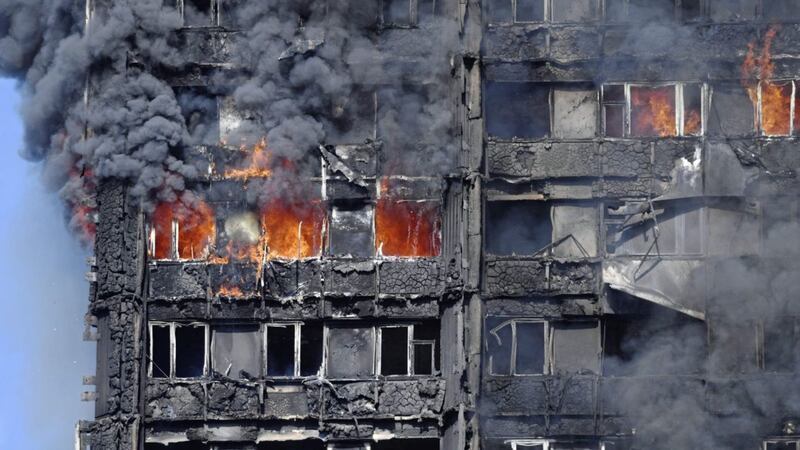So José is gone, and although the baby-faced assassin is in the dug-out until the end of the season, there is no doubt Manchester United are in limbo. We know the feeling.
The Special One's reign lasted 935 days, and although we haven't had a government for just 200 less than that, a betting man would wager we'll pass him in the summer.
In December, the Northern Ireland chair of the Institute of Directors put the price tag of infrastructure projects stuck in the development pipeline at £2 billion. But it is not only projects halted by Stormont's hiatus, policy and legislation are jammed up as well. One example, is the region's fire safety regime.
This column has previously discussed the new regulatory framework in the UK arising out of Dame Judith Hackitt’s Independent Review of Building Regulations and Fire Safety following the tragic events of the Grenfell Tower fire in June 2017.
That review called for a 'radical re-think' of the whole fire safety regime but stopped short of recommending a ban on flammable cladding on high rise buildings.
But on the day that the Hackitt report was published, the government announced a consultation on the introduction of such a ban and with the result that as of Decebmer 21, the use of combustible materials on external walls of high-rise buildings that contain flats, as well as hospitals, residential care premises and student accommodation above 18 metres in height will be banned in England and Wales.
As well as applying to new buildings, the ban will also apply where there is a 'material change of use' of an existing building bringing which brings it into scope.
This means that where an existing building over 18 metres in height is being changed to become residential or institutional accommodation, any material which does not achieve the required European classifications would need to be removed.
The ban comes into effect by way of the existing Building Regulations frameworks in those jurisdictions. However, as this is a devolved matter for the NI Assembly and the Department of Finance and in the absence of any apparent will to introduce legislation via direct rule these changes will not apply to Northern Ireland.
Not only does this raise issues from a legislative position, but it will of course have an impact on how projects are procured in the north in the absence of such legislation.
The market approach to the procurement of commercial developments in Northern Ireland is to include contractual obligations on contractors, sub-contractors and professional consultants to ensure that materials which are 'prohibited' or 'deleterious' are not used or specified for use in the construction process.
The phrase 'prohibited' in this sense extends beyond materials that are prohibited in law but extends to a contractual definition to cover any materials which are known within the industry to have an adverse impact on the construction or because they may cause harm to individuals. These provisions are commonly extended to address the specific nature of the buildings being constructed.
Therefore, in common with a prevailing theme in Northern Ireland it is likely that in the absence of our legislative assembly the onus will fall on the business community to try and keep us in line with developments elsewhere in the UK and Europe.
The market will react, even if the levers of policy are stuck, but it is far from an ideal situation, and only adds further complexity to procurement.
The only question remains, which cabinet will see progress first - where they keep the trophies at Old Trafford, or the seats round the Stormont Executive table?
:: Ciaran McNamara is senior associate in construction at Pinsent Masons








